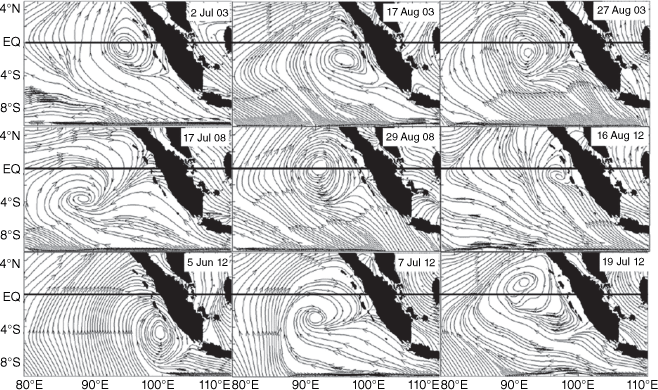Phys.org November 28, 2022
Researchers in Australia focused on the regional wind variability that controls the intensity of cold-water upwelling off Sumatra – a key feature of the Indian Ocean Dipole (IOD). Their analysis of daily atmospheric data revealed the existence of convectively triggered synoptic-scale atmospheric cyclones in the South-East Tropical Indian Ocean (SETIO). The northern branch of the cyclones corresponded to westerly equatorial wind events, whereas the eastern branch involved north-westerly winds that operate to suppress cold-water upwelling off Sumatra’s west coast. Data for the period 1988–2022 showed that 5–9 SETIO cyclones normally form each year during the boreal summer–autumn season, effectively suppressing upwelling in the region. In contrast, there were only few (1–2) cyclone events in years identified as positive phases of the IOD, when the absence of cyclones occurred with the development of strong coastal upwelling off Sumatra. According to the researchers their findings suggest that the absence or presence of SETIO cyclones contributes to IOD variability…read more. Open Access TECHNICAL ARTICLE

Streamlines of surface winds in the SETIO region for selected days during peak convective phases of 2003, 2008 and 2012. Credit: Journal of Southern Hemisphere Earth Systems Science, Published online: 22 November 2022